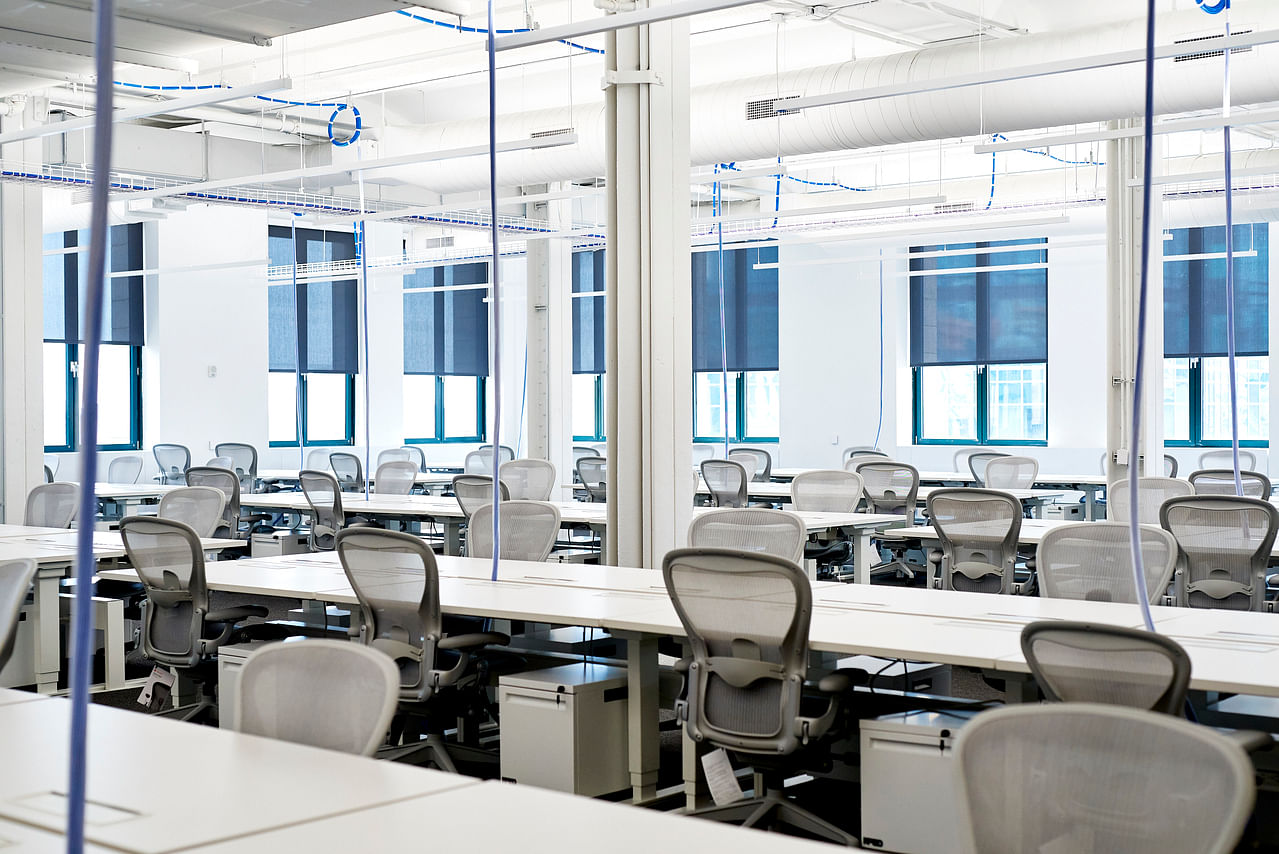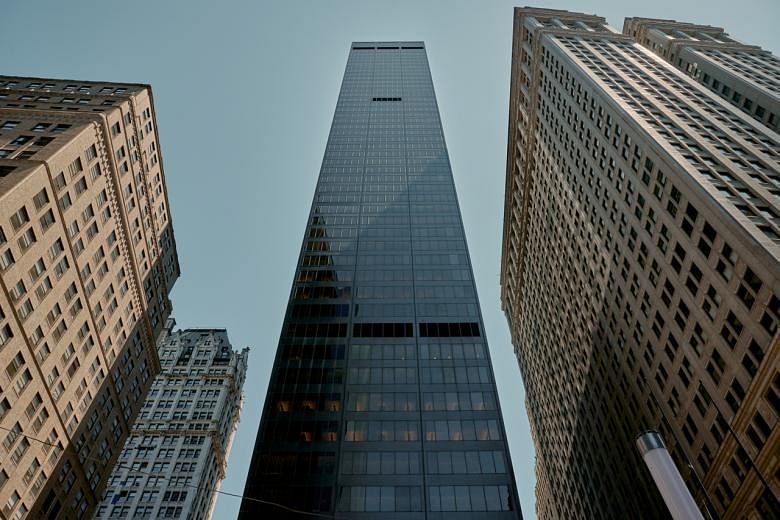NEW YORK (NYTIMES) - Even as New York City reopens and embarks on a long road to economic recovery, the coronavirus pandemic's lasting legacy of a changing workplace is emerging as a major obstacle to the revival of the vital commercial districts that help fuel the city's economy.
While some companies are preparing to call back workers to their offices, the amount of office space available for lease in Manhattan has soared to the highest rate ever, according to reports released on Thursday, underscoring how the sudden shift to remote work during the pandemic is upending the city's commercial real estate industry.
Across Manhattan, home to the two largest business districts in the country, 18.7 per cent of all office space is available for lease, a jump from more than 15 per cent at the end of last year and more than double the rate from before the pandemic, according to Newmark, a real estate services company.
Many New York employers are offering greater flexibility to their workforce, allowing at least some remote work even as the pandemic recedes and recalculating their space needs. As a result, companies continue to end their leases or seek tenants to take over their existing leases at a steady pace.
Some neighbourhoods are faring worse, such as Downtown Manhattan, where 21 per cent of offices have no tenants, Newmark said.
Ms Kathryn Wylde, president of the Partnership for New York City, an influential business organisation, said that New York City was facing its biggest crisis since the 1970s, when half of the city's 125 Fortune 500 companies moved out.
"This is as close as we've come to that type of scenario where there's an exodus from the city, and the recovery took 30 years," Ms Wylde said. "The city has to attract people for reasons other than going to the office."
No other city in the United States must confront the changing workplace more so than New York, whose offices, before the pandemic, had attracted 1.6 million commuters every day and helped sustain a swath of the economy, from shops to restaurants to Broadway theatres. The pandemic has also placed enormous pressure on the commercial real estate sector, a pillar of the New York economy, as landlords rush to redesign offices and dangle incentives like lower rent to retain and attract companies.
Property taxes are the largest source of revenue for New York City, with commercial property accounting for the largest share of that at 41 per cent.
Commercial districts across the country are struggling, but office towers in Manhattan continue to empty out even as other cities, including Atlanta and Los Angeles, show signs that they have moved beyond the worst of the pandemic.
While New York's vacancy rate was higher than the national rate of 16.2 per cent at the end of March, many other cities are also struggling to fill their offices.
In Los Angeles, 24.1 per cent of its offices are without tenants, and in Chicago, the office vacancy rate is 21.9 per cent. But both cities also entered the pandemic with much higher vacancy rates than New York: In Los Angeles, the rate was 18.1 per cent, while it was 15.5 per cent in Chicago.
There are signs that the situation in New York could get worse. A third of leases at large Manhattan buildings will expire over the next three years, according to CBRE, a commercial real estate services company, and companies have made clear they will need significantly less space.

The overall availability rate in New York City is the highest since it started to be tracked in the mid-1970s, when the city was plunged into a financial crisis and the Manhattan skyline was being transformed by the rise of towering office buildings like the Twin Towers at the World Trade Centre.
Mr Franklin Wallach, senior managing director at research real estate firm Colliers, said that the amount of available office space in Manhattan would most likely continue to climb, as new construction is completed and large companies complete relocation plans that were announced before the pandemic.
About 14 million sq ft of office space is under construction in New York City, which is equal to about double the size of Orlando, Florida.
Just as the broader economic recovery has been uneven, with some industries faring better than others, so too will the office market rebound in different ways in Manhattan, Mr Wallach said. Neighbourhoods close to major transportation hubs, like Pennsylvania Station and Grand Central Terminal, could recover faster than other parts of Manhattan.
"The long-term, overall market will recover," Mr Wallach said, "but the when, where and how - that will vary where you are standing."
One real estate firm, Savills, said the Manhattan office market would not likely rebound to pre-pandemic levels until "late 2022 or beyond".
At the end of May, just 12 per cent of Manhattan's office workers had returned to their desks, according to a survey of companies by the Partnership for New York City. More than 60 per cent of workers are estimated to return in September, the group said, but many companies will allow their employees to work remotely at least several days a week.
Throughout the pandemic, just one industry - the technology sector - has signed significant leases in New York. But those companies, such as Facebook and Google, are also perhaps best equipped to shift seamlessly to remote work. Facebook's chief executive Mark Zuckerberg said last month he planned to work outside the office for half of next year.
Ms Wylde said that the growth of the tech sector increasingly appeared to be a short-lived success, as employees in those companies demand that they be allowed to work remotely or on a hybrid schedule on a permanent basis. They are telling their employers that they do not want to pay expensive apartment leases in New York to work in the office only a few days a week, she said.
"The other cities have become more competitive as a result of the pandemic and the whole remote work phenomenon," she said. "It's going to require a real shift in public policy towards focusing on quality of life, a positive business climate and affordability."

